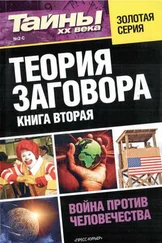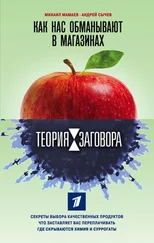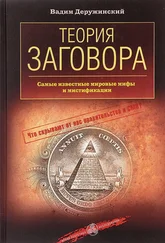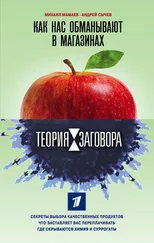Глава 1. Неприличное предложение
R. E. Nesbitt, L. Ross. Human Inference: Strategies and Shortcomings of Social Judgement . Eaglewood Cliffs, NJ; Prentice Hall, 1980.
FEMA 403. World Trade Center Building Performance Study. Federal Emergency Management Agency, 2002.
K. D. Thompson. Final Reports from the NIST World Trade Center Disaster Investigation (2011).
J. McCain. Debunking 9/11 myths: Why conspiracy theories can’t stand up to the facts . Sterling Publishing Company, Inc., 2006.
T. Goertzel. The Conspiracy meme // Skeptical Inquirer , 35 (1) (2011).
D. R. Grimes. On the viability of conspiratorial beliefs // PloS one 11.1 (2016): e0147905.
Глава 2. Доведение до абсурда
G. H. Hardy. A mathematician’s apolog y . Cambridge University Press, 1992.
S. Singh. The code book: the evolution of secrecy from Mary, Queen of Scots, to quantum cryptography . Doubleday. 1999.
B. Russell. History of western philosophy: Collectors edition . Routledge, 2013.
The World Health Organisation. Electromagnetic fields and public health: mobile phones (2014).
INTERPHONE Study Group. Brain tumour risk in relation to mobile telephone use: results of the INTERPHONE international case-control study // International Journal of Epidemiolog y 39.3 (2010): 675–694.
P. Frei et al. Use of mobile phones and risk of brain tumours: update of Danish cohort study // British Medical Journal 343 (2011): d6387.
J. Schuz et al. Cellular phones, cordless phones, and the risks of glioma and meningioma (Interphone Study Group, Germany) // American Journal of Ep-idemiolog y 163.6 (2006): 512–520.
D. R. Grimes, D. V. M. Bishop. Distinguishing polemic from commentary in science: Some guidelines illustrated with the case of Sage and Burgio (2017) // Child development 89.1 (2018): 141–7.
J. Ronson. So you’ve been publicly shamed . Riverhead Books, 2016.
Глава 3. Non sequitur
J. A. Greene. “For Me There Is No Substitute”: Authenticity, Uniqueness, and the Lessons of Lipitor // American Medical Association Journal of Ethics, 12.10 (2010): 818–823.
United States Bureau of Chemistry, Service and Regulatory Announcements, Issues 21–30 (1917).
R. Wiseman, D. West. An experimental test of psychic detection // The Police Journal 70.1 (1997): 19–25.
D. Druckman, J. A. Swets. Enhancing human performance: Issues, theories, and techniques . National Academies Press, 1988.
Глава 4. Дьявол в деталях
F. C. Bing. The book forum // Journal of the American Medical Association (1971).
H. Hemila et al. Vitamin C for preventing and treating the common cold // Cochrane Database of Systematic Reviews (2013).
D. J. A. Jenkins et al. Supplemental Vitamins and Minerals for CVD Prevention and Treatment, Journal of the American College of Cardiology 71 (22) (2018).
J. W. Wheeler-Bennett. Ludendorff: The Soldier and the Politician // The Virginia Quarterly Review 14 (2): 187–202 (1938).
Глава 5. Дым без огня
B. F. Skinner. Superstition in the pigeon // Journal of Experimental Psycho-log y 38, (1948) 168–172.
B. Goldacre. Bad Science . London, Fourth Estate, 2008.
B. Deer. How the case against the MMR vaccine was fixed // British Medical Journal 342 (2011).
F. Godlee, J. Smith. Wakefield’s article linking MMR vaccine and autism was fraudulent // British Medical Journal 342 (2011).
F. E. Andre et al. Vaccination greatly reduces disease, disability, death and inequality worldwide // Bulletin of World Health Organization 86: 140–146 (2008).
D. Kahneman. Thinking, fast and slow . New York: Farrar, Straus and Giroux, 2011.
Глава 6. Природа зверя
University of Virginia Center for Politics, Reuters/Ipsos/UVA Center for Politics Race Poll (2017).
D. Canning, S. Raja, A. S. Yazbeck. Africa’s demographic transition: dividend or disaster? // The World Bank (2015).
A. Rutherford, A Brief History of Everyone Who Ever Lived: The Stories in Our Genes . Weidenfeld & Nicolson, 2016.
T. C. Daley et al. ‘IQ on the rise: The Flynn effect in rural Kenyan children // Psychological Science 14 (3), (2003), 215–219.
S. Ritchie. Intelligence: All that matters . Hodder & Stoughton, 2015.
N. W. Bailey, M. Zuk. Same-sex sexual behavior and evolution // Trends in Ecolog y & Evolution 24.8 (2009): 439–446.
G. Galilei. Dialogue Concerning the Two Chief World Systems (1632).
Глава 7. Заманить и подменить
C. Darwin. On the Origin of Species (1859).
National Academies of Sciences, Engineering, and Medicine. The health effects of cannabis and cannabinoids: The current state of evidence and recommendations for research. National Academies Press, 2017.
Joint Committee on Health. Report on Scrutiny of the Cannabis for Medicinal Use Regulation Bill 2016. Houses of the Oireachtas, 2017.
Глава 8. Бен Ладен Шрёдингера
G. Beale. The cult of T. D. Lysenko: thirty appalling years // Science Journal (1969).
L. Festinger. When Prophecy Fails: A Social and Psychological Study of a Modern Group That Predicted the Destruction of the World . Harper-Torch-books, 1956.
M. R. Allen et al. IPCC fifth assessment synthesis report-climate change 2014 synthesis report (2014).
P. Diethelm, M. McKee. Denialism: what is it and how should scientists respond? // European Journal of Public Health 19.1 (2009): 2–4.
S. Weart. Global warming: How skepticism became denial // Bulletin of the Atomic Scientists 67.1 (2011): 41–50.
S. Lewandowsky, K. Oberauer, G. E. Gignac. NASA faked the moon landing – therefore, (climate) science is a hoax: An anatomy of the motivated rejection of science // Psychological Science 24.5 (2013): 622–33.
D. R. Grimes. Denying climate change isn’t scepticism – it’s “motivated reasoning” // The Guardian (2014).
D. M. Kahan et al. Motivated numeracy and enlightened self-government // Behavioural Public Policy 1.1 (2017): 54–86.
Глава 9. Память остается
National Research Council. Identifying the culprit: Assessing eyewitness identification . National Academies Press, 2015.
O. Sacks. Speak, Memory // New York Review of Books (2013).
E. F. Loftus, J. E. Pickrell. The formation of false memories // Psychiatric Annals 25.12 (1995): 720–725.
E. F. Loftus. Planting misinformation in the human mind: A 30-year investigation of the malleability of memory // Learning & Memory 12.4 (2005): 361–366.
N. Schreiber et al. Suggestive interviewing in the McMartin Preschool and Kelly Michaels daycare abuse cases: A case study // Social Inf luence 1.1 (2006): 16–47.
Глава 10. Кинжал, измышленный воображеньем
T. E. Moore. Scientific Consensus and Expert Testimony: Lessons from the Judas Priest Trial // Skeptical Inquirer , 20 (6) (1996).
O. Blanke et al. Neurological and robot-controlled induction of an apparition // Current Biolog y 24.22 (2014): 2681–2686.
Читать дальше
![Дэвид Граймс Неразумная обезьяна [Почему мы верим в дезинформацию, теории заговора и пропаганду] [litres] обложка книги](/books/385552/devid-grajms-nerazumnaya-obezyana-pochemu-my-verim-cover.webp)







![Дэвид Шефф - Красивый мальчик. Правдивая история отца, который боролся за сына [litres]](/books/438369/devid-sheff-krasivyj-malchik-pravdivaya-istoriya-otc-thumb.webp)



